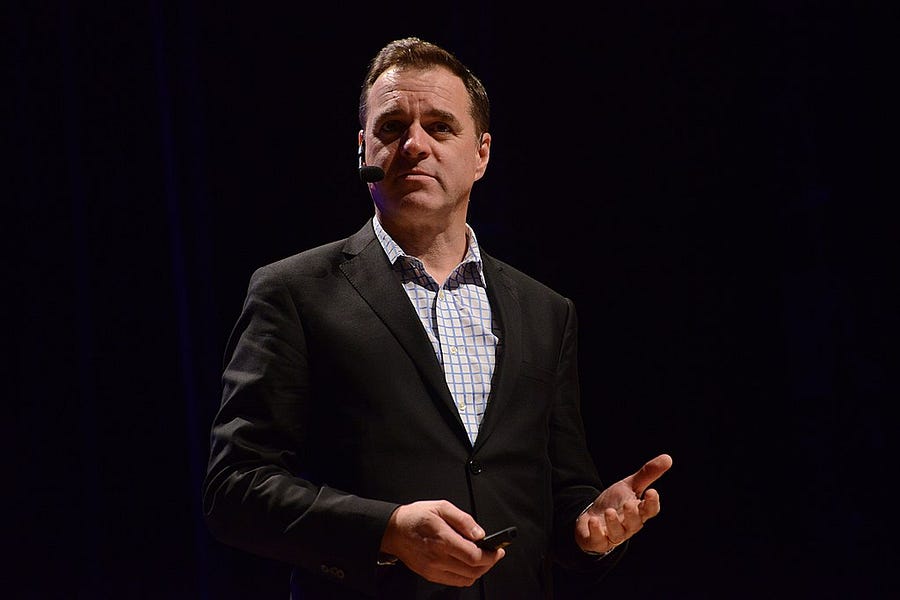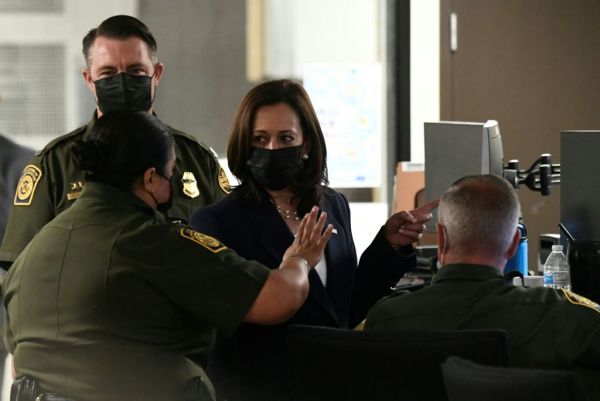Non-fiction books take, on average, eight to 12 months to write, followed by an additional year or so of editing, fact-checking, organizing, and other publishing wizardry. The time between book proposal and bookshelf is roughly two years.
Taking that into account, readers should be wary of the flurry of new COVID books, written about an ongoing event that started only a year or so ago. As Michael Lewis opens his pandemic book, Premonition, this subgenre is “an unholy mix of obligation and opportunity,” a publishing goldmine in millions of graves.
But upon starting Niall Ferguson’s merrily titled Doom: The Politics of Catastrophe, it’s clear that pandemics, plagues, and the potential end of the world have been on its author’s mind long before our current dilemma; the author writes of “studying the Hamburg cholera epidemic of 1892 as a graduate student more than thirty years ago.” COVID was merely the spark for this latest entry to his long run of (quite long) books reframing and reconsidering a historical topic. Here, as in his last book The Square and the Tower, his chosen lens is network theory: an analytical framework that considers how relationships (and their strength, closeness, and number) cause and affect events. Networks are “the single most important feature of natural and man-made complexity”: from the web of neurons within our skulls, to how we make and share ideas, to how we have spread across the globe, forming communities and countries.
That 2016 book used network theory to consider the history of power, and the overemphasized role of hierarchies. In Doom, it’s about how the world has almost ended (or so it seemed), and how our connections have enabled that.
Ferguson is in well-trod territory. Beyond broader network theory books like Albert-László Barabási’s Linked, Malcolm Gladwell’s The Tipping Point and Watts’ Six Degrees, this isn’t even the first network-theory COVID book, with Nicholas Christakis’ Apollo’s Arrow taking that trophy. But never has network theory been applied to this scale, with Ferguson telling two grand parallel tales: of our history with close encounters of the last kind, from Pliny the Younger to Anthony Fauci (twice), and of our flawed explanations for why they happened.
Though Doom is not aiming for “best beach read” lists, Ferguson’s prose turns a potential dour slog into the best kind of non-fiction writing. He is as allergic to caricature as he is to a dull sentence. By perfectly balancing meticulous research with easy reading, he fashions himself as historian-cum-Dr. Who, whisking you through the centuries with sprinklings of British wit. He favors novelty in history and ideas, and intersperses it all with a wealth of cultural references, from chart-topping music to Greek tragedies, and the best of British comedic television. Our collective human misery is never a misery to read about.
Doom’s greatest trick is its structure, which makes it accessible to the casual reader while also giving my fellow morbid sods their desired depth of history and theory. The introduction lays out the terrain, summarizing the content of each coming chapter, and so allows readers to pick and choose the history of their interest without missing his thesis or committing themselves to the full 400 pages. I flag Chapter 1’s “We Are All Doomed,” Chapter 2’s “Birds of Hell” (on the meaning of death and the origin of gallows humor), Chapter 3’s “Life and Death on the Fault Lines,” Chapter 4’s “Voltaire vs. Pope” (how the 1755 Lisbon earthquake influenced enlightenment philosophy and was exploited by Portugal’s prime minister), and Chapter 5’s “Lady Influenza” (how World War I spread and hid the 1918 Spanish flu) as particular high points.
Woven through it all is the theory: of how we have explained such events, and how poorly we have done so, falling to simplification and scapegoats;
“If we had a competent President, then this wouldn’t have happened!”
“If only more people worked together, we would have been fine!”
“If they actually listened to the scientists, then it wouldn’t have been a disaster!”
Such ancient but familiar proclamations fail to account for the more complex reality, but so do the more studied approaches. Malthus was wrong about population, as was Gore about sea levels, the Doomsday Clock is always a minute away from midnight, eras aren’t that cyclical, leaders overvalue their influence, Cassandras have predicted the world’s end with an impressive 0 percent record of accuracy, and “Cliodynamics” is flawless for Scrabble but little else.
Many COVID books focus on those who warned of a pandemic’s likelihood, but Ferguson suggests their theories are but a secular upgrade to explaining nature’s chaos through vindictive deities; and at least tribespeople didn’t feign to know the mind of their gods. As he says, “history is a process too complex to be modeled, even in the informal ways.” Conversely, those affected by a bias toward newness, “who use terms like ‘unprecedented’ about a crisis are in general merely conveying their ignorance of history.”
With a network framing, Ferguson avoids such flaws. He isn’t suggesting that our dilemmas are particularly special, nor is he pinning disaster to a single factor, a single leader, or a particular “cycle,” because disasters aren’t discrete events but sequences, building and unfolding from node to hubs in networks. And his ideas provoke thought in equal measure to alarm.
He demonstrates that it is often not a lack of collaboration that causes great disasters but just how connected we are. Be these social contagions spreading across social media, waves of violence spreading through groups, or actual contagions, spreading through touch and breath, Ferguson details how entanglement makes highways for disaster; and that the technological and scientific improvements it also brings don’t outpace this.
The premise of Chapter 5 “The Science Delusion” is precisely this; that medical history may not be a march toward a better tomorrow, but “a cat-and-mouse feud between science … and human behavior.” Empires “grew much faster than the medical knowledge of those administering them,” so ended coughing in many cases, and until immunization, the scientific approaches were about as effective as they were appealing—give me death over the beeswax solution Ferguson cites. Conversely, the “Quacks” subchapter notes that the most effective solutions (including masking and quarantines) originate in superstition, not science, and are effective because they limited social habits, and even since the development of vaccines, behavior has proven a worthy foe for scientific advancements.
Some of the ideas Ferguson takes down are controversial to deny, such as the notion that leaders (competent or otherwise) have a significant effect on the scale of disaster. Others have less practical impact but are fascinating regardless, such as the blurry line between “natural” and “man-made” disasters. A volcanic eruption is a disaster only if there’s a human presence nearby to be affected by it, and—drawing on Sim’s theory—famines (among other disasters) occur out of a scarcity of political will, not resources. Perhaps the most unsettling point is just how little scientific progress has accounted for our disaster survival: He notes our only major advances with immunization occurring between the 18th and mid-20th century, while the second half of the 20th century demonstrated how the gains of science can be unraveled by social effects.
The “Fractal Geometry of Disaster” sets aside the doomsdays of the previous seven chapters to retrace several smaller catastrophes, showing how the same network effects and social errors that destroy cruise ships also take down empires. The sheer magnitude of global disasters makes them seem inherently anarchic, so by bringing down the scale, and showing that the traditional explanations for Chernobyl, the Challenger disaster and so on are but comforting fictions, you become both more convinced of his thesis and more unnerved by it.
In turn, though, this makes the general omission of nuclear weapons both prominent and odd. The world-ending potential of these weapons has been the ultimate deterrent against military escalation, but as shown by Daniel Ellsberg’s The Doomsday Machine and Eric Schlosser’s Command and Control, it’s only thanks to luck that we haven’t had a catastrophic nuclear mistake with them. In the 18 years before the 1968 Nuclear Non-Proliferation Treaty, there were 700 reported “significant” accidents involving 1,250 nuclear bombs. This fits perfectly into his network theory, and even with the safety of these particular weapons dramatically increasing, Tyler Cowen’s point on reducing the cost of mass killing is becoming truer by the day.
Up until this point, I’ve scarcely mentioned COVID, and that’s because, for these first eight chapters on our history with pandemics, Ferguson doesn’t either; and he doesn’t need to. As Ferguson writes in the introduction:
“Why write history now, when the story is not yet over? The answer is that this is not a history of our perplexing postmodern plague … [but] a general history of catastrophe. … For how else are we to see our disaster—any disaster—in a proper perspective?”
This angle makes the first eight chapters the strongest non-fiction book written about the pandemic; and yet Chapters 9 and 10 focus squarely on COVID. It’s a testament to Ferguson’s prose that you can enjoy reading about events you’ve seen endlessly on TV and Twitter for a year, and they’re detailed chapters despite the limitations of his deadline. But why is it here?
His observations about the near future seem astute—though his concluding suggestions that this may clear the thicket of American institutions like universities, corporate wokeness, and governmental backwardness seem delusionally optimistic. But these have little to do with network theory; and when he does tie back, it unintentionally weakens his earlier points.
He argues how neither Boris Johnson nor Donald Trump can be held responsible for their governments’ failures, but one needn’t be a cheerleader for the unitary executive to say that it’s also their job to oversee their agencies and advisors, and when you look at the unmentioned plight of India, Brazil and Hungary, it’s not hard to think the rot comes from the head.
Of course, India was doing relatively fine when Ferguson finished his draft, but that’s precisely the problem. If he had waited a year or so, he would have had the data to more robustly support his case; for the countries he mentioned and those he couldn’t have.
This all makes his prediction that COVID will fade from cultural memory like the 1957 influenza pandemic all the more suspect. We already know that his estimation about COVID deaths in 2020 was overly optimistic—his August estimation of 250,000 American deaths undercounted by some 100,000—so what stock should we give this? You can’t help wondering whether it would have been wiser to wait for the game to finish before announcing the score.
In turn, why is there so little dealing with how we make society more resistant to such pandemics?
He writes in the introduction that “a networked society needs to have well-designed circuit breakers that can swiftly reduce the connectivity of the network in a crisis, without atomizing and paralyzing society completely” and in the contents that “our modest goal should be to make our societies and political systems more resilient—and ideally antifragile—than they currently are.” Having read through his book, this seems very clear; but how to actually do so is not. Clearing bureaucratic slouch, increasing governmental tech literacy, and shrinking the state are indicated as positives throughout, but how to do this is never detailed. He notes that making an anti-fragile society “requires a better understanding of network structure and of bureaucratic dysfunction than we currently possess,” but knowledge is only a prerequisite for action and policy—and there’s no discreet section—chapter or subchapter—on concrete solutions to helping this, despite coming from someone who wrote the literal book on this apparently necessary knowledge.
In the spirit of Ferguson’s pop-culture references, Doom is somewhat like a premium TV show that has an incredible first couple of seasons, then spends too long on unnecessary B-plots only tenuously related to the core story, before being abruptly canceled without the build-up being resolved.
Like his previous books, it is grand in historical scope, beautifully written, very accessible, and yet meticulously researched, and has a range of cultural references as broad and interesting as the conceptual ones. And, like the best COVID books, it makes us think about this moment with more clarity that the minute-by-minute news allows, and imparts lessons for handling similar events in the future. But it also leaves interesting ideas uncompleted, extensively digresses on tenuously related points, and may have been written a year or so earlier than it should have.
Doom doesn’t quite work; but I will gladly take bold stumbles over dry, generic plodding. And, as with his previous books, I am very glad I read Doom, and will have his next one on pre-order as soon as it’s announced. If you share my love for novel ideas and interesting history, I advise you do the same.
Ross Anderson has written for Los Angeles Magazine and The American Conservative and was a 2020 fellow at Tablet.








Please note that we at The Dispatch hold ourselves, our work, and our commenters to a higher standard than other places on the internet. We welcome comments that foster genuine debate or discussion—including comments critical of us or our work—but responses that include ad hominem attacks on fellow Dispatch members or are intended to stoke fear and anger may be moderated.